Combat aircraft. ANT-31: Sukhoi, a loser to Polikarpov
May 27, 1933 pilot K.A. Popov made his first flight on an experimental fighter I-14 (ANT-31). The flight was successful, work on the aircraft continued.
What is behind this information? In principle, nothing special. But for those who do not know what kind of car this will be very informative material now. The I-14 is not just a plane that was produced in a small series, it was a transition to a new principle of design and creation of aircraft.
A plane that did not seem to stay in stories, but nevertheless became a very noticeable milestone in the development of the design school of the USSR.
To begin with, the name ANT is not entirely correct (and to be honest, it is completely incorrect). Patriarch Aleksey Nikolaevich Tupolev did not design this aircraft, work was carried out under his “general leadership”. But everyone understands how it looked.
The creator of the aircraft is Pavel Osipovich Sukhoi. At that time - the head of the team number 3 on the creation of fighters and record aircraft in the structure of the Design Department of the pilot construction sector (COSOS) at TsAGI.
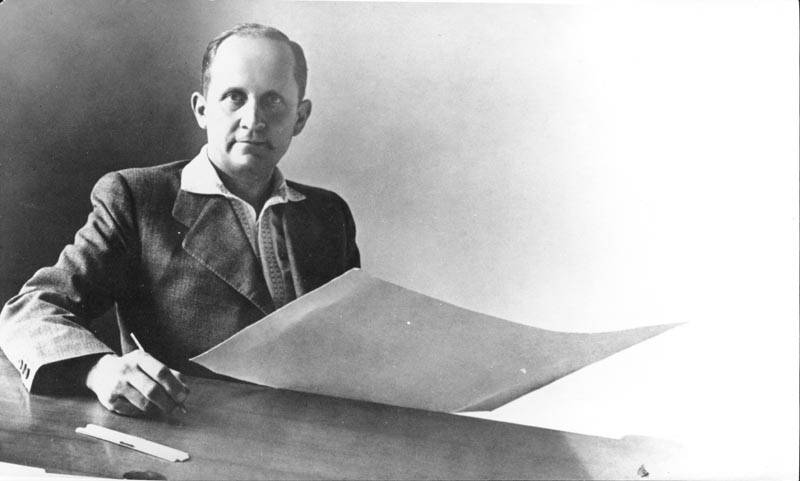
The story began in 1932, when Sukhoi, in parallel with Polikarpov, was given the task of developing the machine of the future: a single-seat all-metal fighter with enhanced weapons.
The plane had to meet international standards, and preferably exceed them. Technical requirements were as follows:
- maximum flight speed at an altitude of 5000 meters - 340-400 km / h;
- rise time to a height of 5000 m - 7 minutes;
- flight range - 500 km;
- armament - 2 guns.
And this was in 1932, when the I-5 fighter was in service with the Red Army Air Force, the maximum speed of which was below 300 km / h and the weapons of which consisted of two PV-1 machine guns. And what is an “air machine gun” is known: a Maxim machine gun converted by Nadashkevich for air cooling.
Sukhoi did everything he could and even more. The project was not just innovative, at that time it was generally something futuristic.
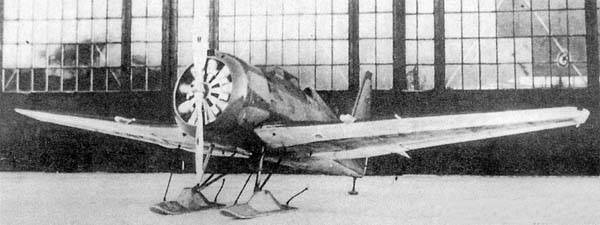
Judge for yourself, here is a list of innovations (looking at it, remember that the case takes place in 1932):
- low-wing monoplane, the wing is located at the bottom of the fuselage;
- retractable landing gear (yes, it’s right here, I-14 was ahead of I-16 in this, which is mistakenly considered the first in this matter);
- chassis on oil-pneumatic shock absorbers;
- wheels with brakes;
- a closed lantern and thanks to this a heated cabin.
The cockpit's equipment was also at a very decent level: an optical sight, a walkie-talkie (conditionally, but the place was planned), an altimeter, a speed indicator, a slip indicator, a longitudinal inclinometer, a clock, a compass.
In N. N. Polikarpov’s parallel project, there were no such "excesses." The fighter, dubbed I-14a, was a half-wing of a mixed design with a wing of the "Seagull" type, with a closed cockpit and fixed gear. Recognized immediately, this is subsequently I-15.
Sukhoi and his comrades went their own way, and this path was thorny and difficult. What did the designers have to face and what became the main obstacle in the development?
That's right, lack of engine.
Yes, there was no engine (as always, however). That is, there was no suitable new engine in terms of power for a new aircraft. In the initial calculations, it was supposed to use the M-38 engine of the designer F.V. Kontsevich, air cooling and a power of 560 hp. However, the engine did not go into the series without passing the life tests, and the I-14 was left without an engine at all.
The British helped out by selling the Bristol-Mercury engine, which, although it produced slightly less, was only 500 hp, but was considered high-altitude. During the tests of the I-14 with a British engine, the pilot K. A. Popov reached a record horizontal speed for the USSR - 384 km / h. At this speed, the I-14 and flew into state tests.
Factory tests of the I-14 were carried out from October 6 to December 13, 1933. During the tests 16 flights were carried out with a total flight time of 11 hours 07 minutes.
The ratings given to the aircraft by test pilot Popov and lead engineer Kravtsov were generally positive, but ambiguous.
Experts noted high speed characteristics, an impressive load per square meter of the wing, somewhat worse maneuverability in comparison with the I-5, but a large payload. And (not least) a small load on the control levers, which made the aircraft strict in piloting. From the pilot required accuracy and accuracy in the movements.
Naturally, there were some childhood diseases. The motor warmed up with terrible force, and when it overheated, detonation began. I had to redo the exhaust system, select a scheme of anti-knock additives for gasoline, at the same time finalized the chassis cleaning mechanism.
The car was handed over for state tests on January 2, 1934 without guns, which factory number 8 just did not have time to make, but they tested the aircraft with a ski landing gear.
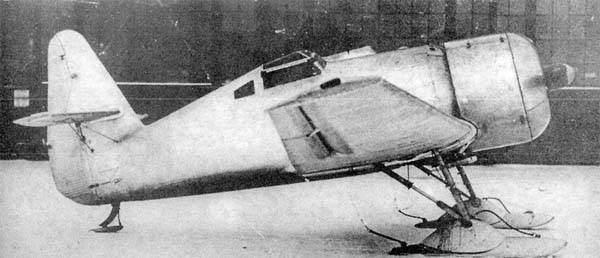
A few words should be said about the guns separately. It was supposed to strengthen the armament of the new aircraft by installing two 75-mm guns of the agro-industrial complex - aviation guns Kurchevsky. There was such a fetish at the time, dynamo-jet guns that had no recoil.
But since Kurchevsky was more a charlatan than an engineer, then overlays always occurred with his creations. So this time, the I-14 was tested without guns.
Leading pilot Thomas Susy and Alexey Filin, who helped him, gave an opinion on the test results:
And it all started again. They re-calculated and started building the backup aircraft.
In August 1933, construction began on the backup of the I-14 fighter with the American Wright-Cyclone engine. When designing, we took into account all the shortcomings of the previous car - the chassis, planes and the engine were redone. The construction of I-14 was completed on February 5, 1934, the next day the plane was taken to the airport, and on February 13 it was handed over for testing. Both factory and state tests were passed with a rating of "good."
Everyone liked the car, and on May 1, 1934, the I-14 took part in the Air Force parade over Red Square. This is a kind of recognition of the corresponding quality of the machine. At the parade, the three passed I-14, I-15 and I-16.
And on May 19, 1934, the head of the Red Army Air Force Alksnis signed the "Act on the results of state tests of the I-14 fighter with the Wright-Cyclone F-2 engine, conducted by pilot A. I. Filin."
The document is large, however, like all that related to state tests, but it has the following lines:
As a part of the tests, fighter flights were made by such luminaries as K. Kokkinaki, A. Chernavsky, I. Belozerov, P. Stefanovsky. And according to their reviews, the I-14 was a pretty decent car.
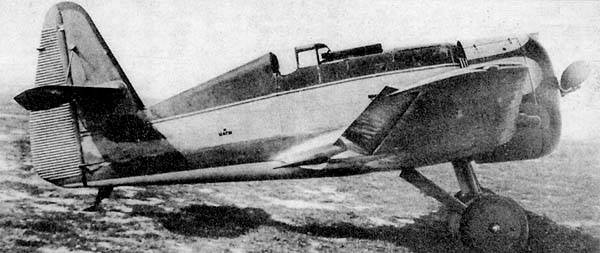
By the way, it was thanks to Stefanovsky’s work on testing weapons from aircraft dynamo guns decided to abandon completely.
Initially, the aircraft’s armament was to consist of 1-2 PV-1 machine guns and two APC cannons under the wing. But after testing the agro-industrial complex, it was decided to abandon dynamo-cannons in favor of the new ShKAS machine guns, and a little later, the discussion also involved the installation of ShVAK guns.
During 1935, a new wing with fenders was installed on the second prototype I-14, heated collectors, an electric starter, a variable-pitch propeller and agro-industrial cannons were replaced with ShKAS machine guns.
At the same time, the wing was calculated on the I-14bis of greater strength with enlarged shields for the experimental installation of ShVAK guns in the wing, however, unfortunately, the matter did not go further than the initial calculations.
But the plane received external bomb racks with SI electric spreaders and a 15SK radio station.
The serial production of I-14 was originally planned to be established at the factory No. 21, which produced I-5. The first batch of 50 cars was supposed to appear in Nizhny Novgorod, but alas, the matter dragged on at the stage of transferring the drawings, and as a result, the order for I-14 was transferred to Irkutsk, to factory No. 125.
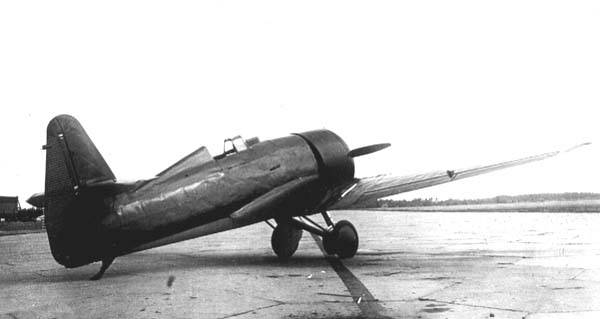
So the serial birth of I-14 took place in Irkutsk in 1936. At the same time, there were problems with the aircraft during factory tests.
September 29, 1936 was a test flight of the first production copy of the I-14. According to the results of factory tests, the specialists of the Air Force Research Institute issued the following conclusion:
In KB and at the factory they reacted, and during 1936-1937 a new plumage was developed, which completely eliminated the problem with the “corkscrew”. However, the military still complained about the aircraft due to poor build quality.
Since the Siberian factory lacked highly qualified specialists, production aircraft had low quality external surfaces, processing rivets, and seams. All this caused a loss of speed, as well as fair complaints from the military.
In total, 55 I-14 aircraft were under construction at the plant. In the aircraft parts in 1936-1937. 18. The rest of the fighters were never completed.
Here the "king of fighters" Polikarpov and his I-16 played a role.
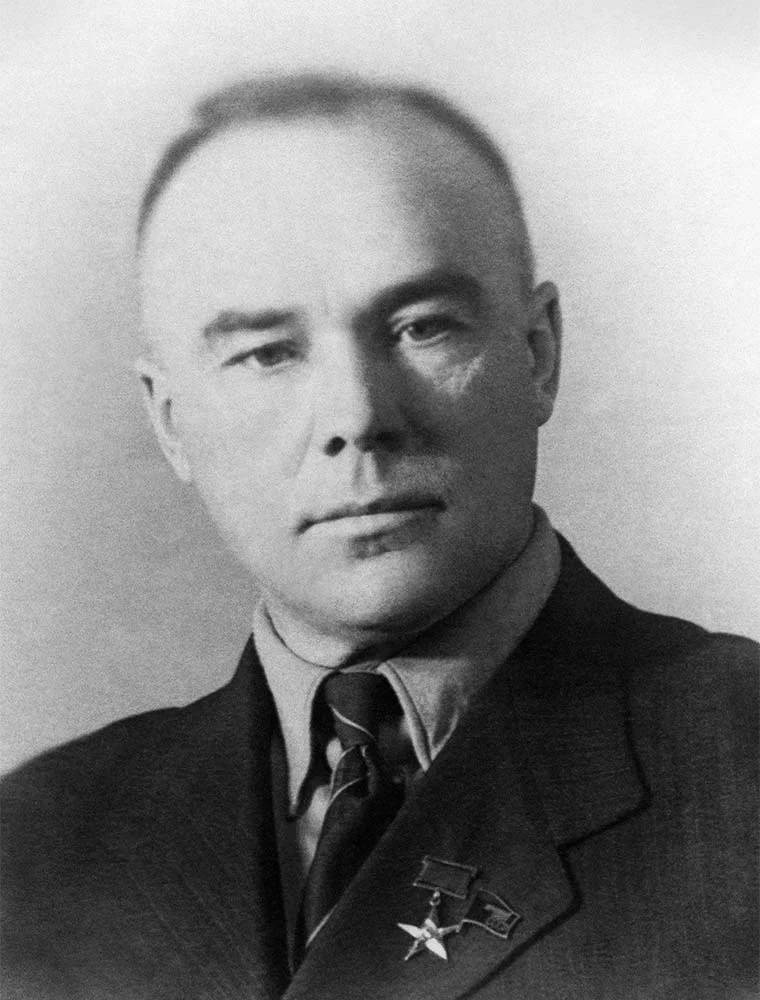
The I-16, which appeared later than the I-14, was a more perfect machine at first glance. It was of mixed design, which means it was simpler and cheaper. But most importantly, the I-16 was faster. Yes, unlike the competitor, the I-14 was easier to fly, had better maneuverability and simple take-off and landing.
However, the simplicity of construction and the use of inexpensive and affordable materials have done their job. Plus, with the same Wright-Cyclone engine, aka M-25V, I-16, it really showed higher flight performance, despite the fact that the Polikarpov fighter was very difficult to pilot.
Nevertheless, having weighed all the pros and cons, the plane of the talented, but very young (second plane) designer P.O. Sukhoi decided to refuse.
The reasons for this decision are simple and understandable. The main thing is the shortage and high cost of aluminum produced in the USSR, the technological complexity and high cost of the new all-metal fighter.
No matter how disruptive the I-14 was, its cost was prohibitive, and the USSR could afford to build all-metal fighters only 10 years later.
Plus, for the Polikarpov fighter with two hands, military pilots who were already accustomed to the "king" technique voted. This is also an important aspect.
The Polikarpov fighter was a mixed wood-metal structure and even allowed the use of canvas, it was cheaper and more technologically advanced in construction with approximately the same flight data as the Sukhoi fighter.
Yes, the I-14 was really somewhat ahead of time. Polikarpov created a more familiar and cheaper car, but there is a nuance. Sukhoi worked under the patronage of Tupolev himself, who was allowed everything, including work on all-metal aircraft. Therefore, no one forbade Sukhoi to design and build such an aircraft, but all other designers were gently and unobtrusively “recommended” to use a mixed design scheme.
Well, what can you do if in reality the country at that time could not produce so much aluminum to satisfy the needs of ALL designers.
But it so happened that the cheap Polikarpov scheme defeated the expensive and innovative Sukhoi scheme. Yes, that happened so often.
I-14 became the second (after I-4) aircraft of Pavel Osipovich Sukhoi. But not the last. In any case, the designer noticed, he was among the best. And he did not leave the design Olympus until his very death in 1975.
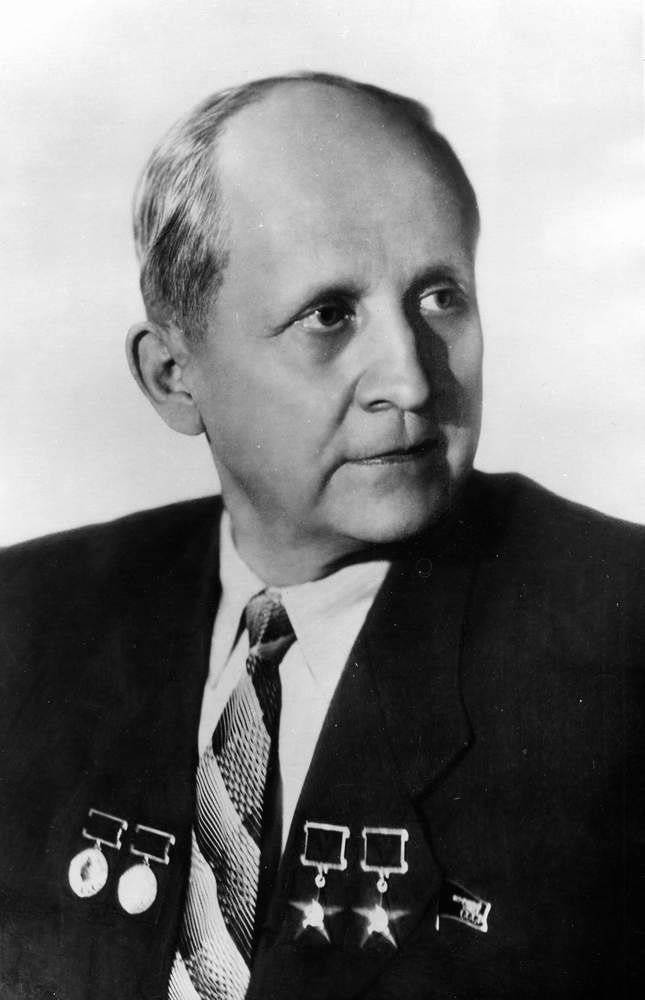
And in December 1933, Pavel Osipovich Sukhoi was awarded the Order of the Red Star for the successful creation of serial combat fighter aircraft I-4 and I-14. The first, but not the last award.
The history of the outbreak of World War II confirmed that Sukhoi was absolutely right: the future lies with all-metal aircraft. In the same way, he turned out to be right when, at the end of the war, he gave up everything and began working on jet aircraft.
But this, in many ways, the first, albeit not a very beautiful aircraft, became the beginning of a new and long path, which Soviet aviation passed with honor and dignity.
LTH-14
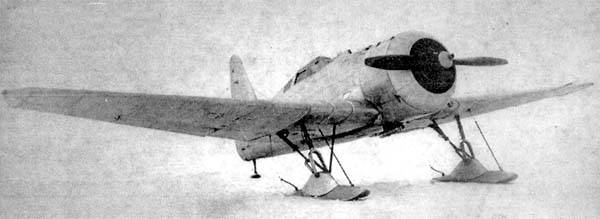
Wingspan, m: 11,25.
Length, m: 6,11.
Height, m: 3,74.
Wing area m: 16,93.
Weight, kg:
- empty aircraft: 1 169;
- normal takeoff: 1 540.
Engine: 1 x M-25 (Wright R-1820 Cyclone-F3) x 712 hp
Maximum speed km / h:
- near the ground: 357;
- at height: 449.
Cruising speed, km / h: 343.
Practical range, km: 600.
Rate of climb, m / min: 769.
Practical ceiling, m: 9 420.
Crew, person: 1.
Armament: 2 synchronous machine guns PV-1, 7,62 mm caliber, 2 machine guns ShKAS 7,62 mm under the wings.
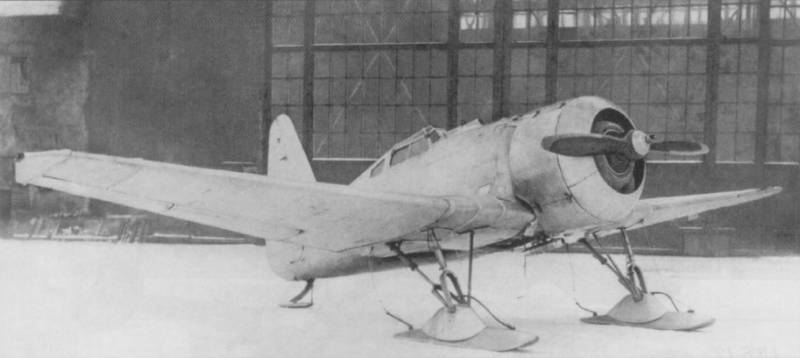
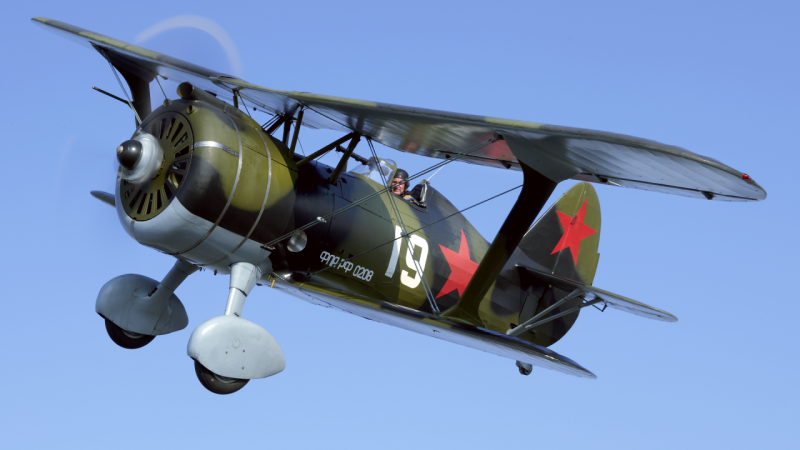
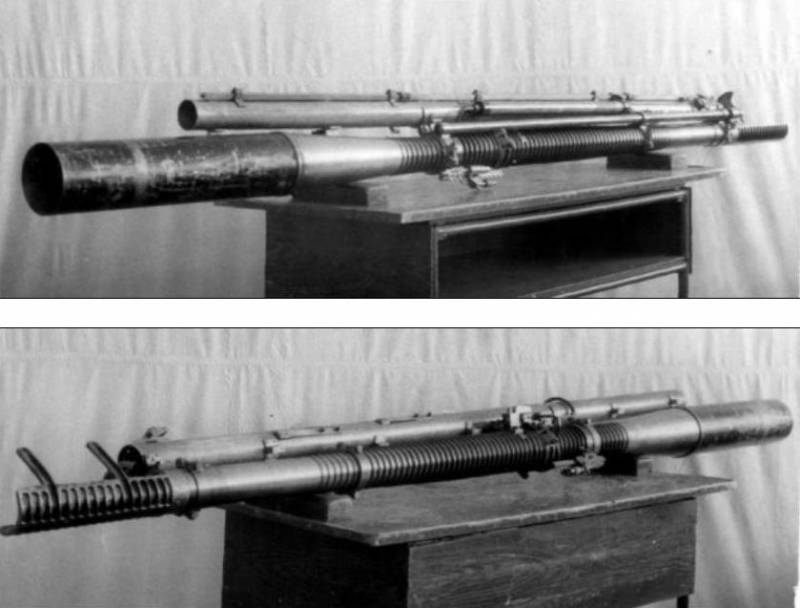
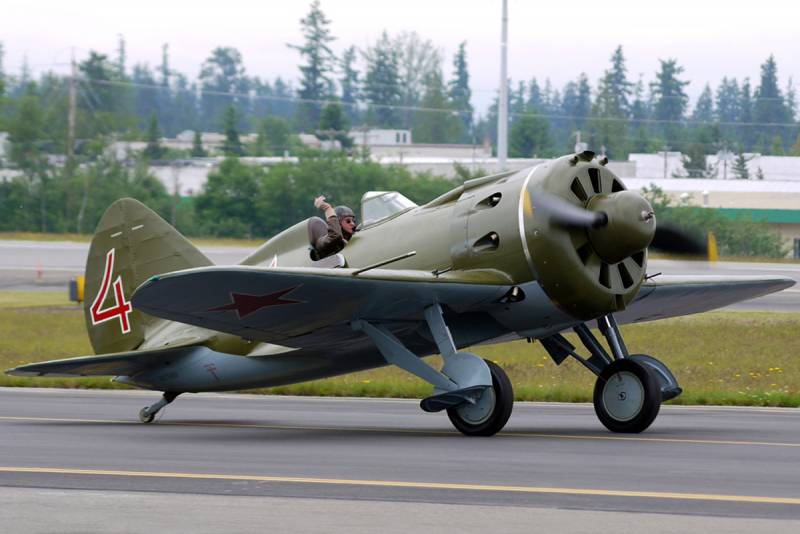
Information